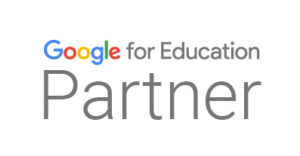When schools across India shut their doors due to the intensifying heatwave, quick fixes like Zoom and Google Meet seemed like a blessing. But now, as these closures stretch longer and school disruption becomes the norm, cracks in our current digital strategy are suddenly visible which questions the school learning infrastructure.
Can we really rely on consumer grade tools for something as vital as our children’s education?
The answer lies in a deeper understanding of school learning infrastructure. Also, just having a video call isn’t enough anymore.
The Illusion of ‘Just Going Online’
Many schools think they’re prepared for closure simply because they have a Zoom link ready. But managing an online class through these platforms is far more chaotic.
Students often turn off their cameras and microphones. Some disappear entirely from the session as teachers struggle to track attention or discipline. Others spend half the class resolving technical glitches. Assignments go missing, feedback loops break and motivation dips across the class.
The fault lies neither with teachers nor students. The reality is that temporary video-based school learning infrastructure was never designed to support real-time education, assessments, or emotional connection. These aren’t just minor hurdles. They are symptoms of a broken system.
Safety Risks We Can’t Ignore
Most video conferencing apps were built for business meetings, not schools. They aren’t fully equipped to handle cybersecurity threats targeting young users.
Recently, many institutions reported cyber-attacks in school systems where unknown users crashed session or stole login credentials. In some cases, students accessed inappropriate content due to lack of content filtering or breached links.
Without secure school networks, students are exposed to a digital world they aren’t equipped to navigate which further questions the liability of the school learning infrastructure. And for school administrators, one breach can damage reputation and trust irreversibly.
The Hybrid Learning Myth
What most schools call ‘hybrid learning’ is just plain online classes during any kind of disruption.
But true hybrid-ready institutions don’t simply turn to these platforms during emergencies. These institutions rely on one system to track attendance, assignments, feedback, content, and student performance.
They invest in smart tools and teacher training for better learning score. They build resilient, school learning infrastructure that doesn’t collapse when classrooms do
Schools are future proofing their learning continuity strategy. They’re choosing smart school decisions in 2025, not Band-Aid fixes from past.
What Today’s Students Actually Need
Children today are digital natives, but they still need structure. When schools rely solely on Zoom or Google Meet, students often:
- Miss live sessions or pretend to attend
- Struggle with time management
- Submit incomplete or late assignments
- Feel isolated and unmotivated
- Fail to engage with peers or teachers meaningfully
While this challenge is contributing to a learning divide, it also presents an opportunity for a clear solution. With a holistic school learning infrastructure, we can empower students to continue thriving even during closures.
They need an environment that mirrors real classrooms. Which includes structured schedules, gamified learning, integrated assessments, and teacher-led feedback loops. That’s not something a meeting link can deliver.
Why Principals and IT Heads Must Act Now to Improve their School Learning Infrastructure
It’s no longer a question of ‘if’ but ‘when’ the next shutdown hits. Heatwaves, floods, pollution alerts, or viral outbreaks; they’re all part of the new normal.
Forward-thinking schools are already upgrading. They’re turning into hybrid-ready institutions with platforms built for education, not meetings. Also, making smart school decisions actively in 2025, not emergency patchwork choices.
Above all, they’re doing it before the next disruption forces them to. Because when that happens, it’ll be too late to start over.
By taking proactive steps now, these schools will avoid another shutdown. This, in turn, gives parents the confidence that their child’s education won’t be paused again.
Building the Right Infrastructure for a better School Learning Infrastructure
At present, schools need to build sustainable school learning infrastructure that goes far beyond video calls. From smart classroom platforms to secure cloud-based systems, from cybersecurity support to student analytics, we need to move from survival to success.
The need of the hour is to deploy secure school networks that protect both teachers and students. It ensures we’re ready for continuity with minimal disruptions.
Zoom and Google Meet helped us earlier. But our future demands more. They were never designed to be the backbone of a school’s digital transformation.
It’s time to stop relying on basic tools and start investing in real school learning infrastructure; before the next heatwave, flood, or shutdown tests us again.
Schools that plan now will lead tomorrow. Others will struggle to catch up.
Don’t be the latter.




 1st Floor, H-31, Sector 63,
1st Floor, H-31, Sector 63,